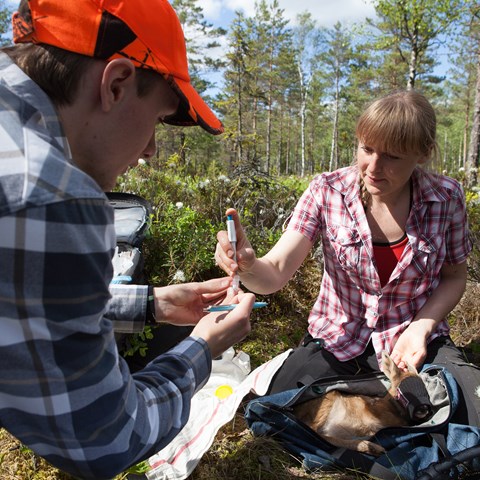The research station was founded in 1974 as an ecological research station with the Swedish Environmental Protection Agency as principal (through a donation by Signhild Engkvist). It is situated in the Bergslagen region, specifically within the Lindesberg municipality in Sweden.
Since 1992, Grimsö has been a part of the activities of the Swedish University of Agricultural Sciences (SLU). Approximately 40 people work at Grimsö, both researchers, doctoral students, field assistants, administrative and technical staff.
Grimsö Wildlife Research Station hosts a research area of 13 000 ha. The main ecosystems surrounding the station are coniferous forests, lakes, streams and wetlands.
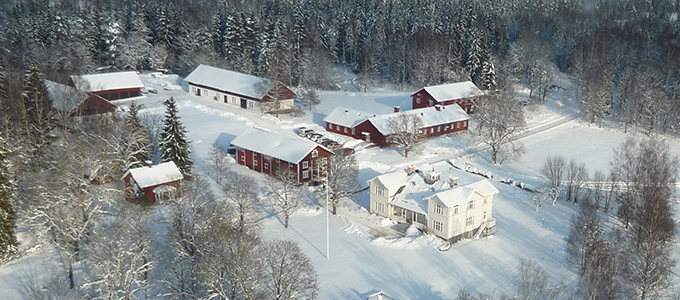
Photo: Guillaume Chapron
Wildlife monitoring
Wildlife monitoring is an important part of the station's activities. A large part of the monitoring was initiated during the 1970s, but new data series have been added over time and as methods developed.
The continuous surveys focus on topics like population dynamics, reproduction, life history traits, body measures etc of for example moose, roe deer, red fox, voles and starlings. The monitoring also includes a tick survey, phenology data on vegetation and ca 70 migratory bird species, and weather data.
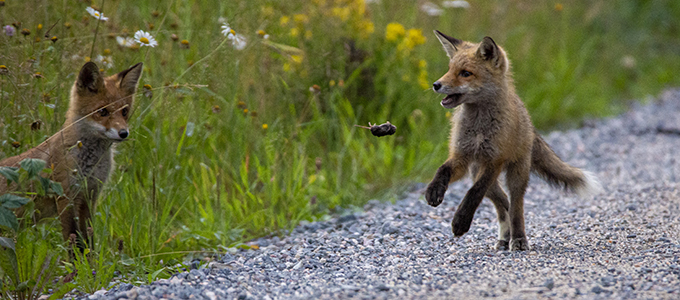
Photo: Carolin Berndt
Researchers can utilise SITES
Since 2013 Grimsö Wildlife Research Station is included in the Swedish Research Council’s investment in a national infrastructure for field research, SITES (the Swedish Infrastructure for Ecosystem Science, SITES).
SITES offers all researchers, regardless of affiliation, the opportunity to use Grimsö Wildlife Research Station and research area as well as the other eight stations as resources in their research. As a researcher you can work at a station and conduct measurements or experiments, or assign commissions which the station will manage.
Another opportunity is to utilise existing data which is collected by the stations.
Contact: Gunnar Jansson, Station manager of SITES
More information at: Grimsö on the SITES´webpage
Research
Our research provides a scientific base for the Swedish management of wild animals and birds. This necessitates information on how the animals live, their location in Sweden and genetic studies. We also conduct research on the attitudes of human beings towards predatory animals and what you can do to reduce conflicts between humans and wildlife.
In addition to access to the large research area, we have a genetic laboratory, kitchen, plant preparation lab, wood and metal workshop, vast knowledge of capture and marking of wild animals, immobilisation technology, etc.
Wildlife Ecology Research
Swedish Wildlife Damage Centre
The Swedish Wildlife Damage Centre is a national centre for knowledge of wildlife, wildlife damage and society. The collaboration work also includes extensive training activities. Our aim is to contribute to limiting damage and conflicts caused by protected game species, primarily large predatory animals and grazing birds.
Education
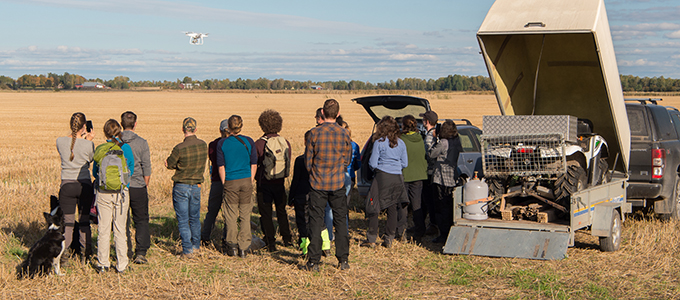
Photo: Johan Månsson
At Grimsö 5-–10 Bachelor’s and Master’s projects as well as a 15 credit course in Wildlife biology are conducted annually. In addition, several continuing professional development opportunities are provided for those who work within wildlife management, county administrative boards and wildlife management delegations. The latter are mainly conducted by the Wildlife Damage Centre.
Would you like to visit Grimsö?
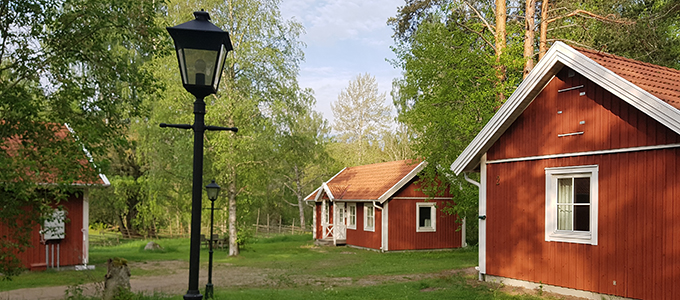
At Grimsö there are also conference premises, overnight accommodation (35 beds), a restaurant and the possibility to bring your own food. The accommodation is used by course participants but is also open for external bookings.
Do you want to book accommodation for a few nights or a longer period? We only have information in Swedish at the moment. Please contact intendentur.grimso@slu.se for help or go to the booking system.
Wildlife exhibition
In 2004, the permanent wildlife and nature exhibition “Naturligtvis” was opened. Please feel free to visit the exhibition and Grimsö Wildlife Research Station. The price does not depend on the size of the group and the guided tour takes 2 hours. If there are more than 50 people, the group will be divided and one half of the group will first receive information from the guide and the second half can look around in the exhibition themselves. The groups will switch place after 1 hour.
For more information, please contact Linda Höglund, +46 581-697310, linda.hoglund@slu.se.
